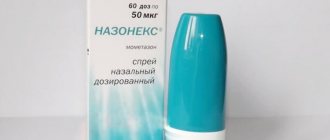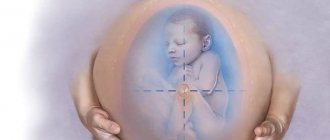Adenoids
- lymphoid tissue that is located in the vault of the nasopharynx, performing a protective function. Excessive formation of adenoids (mainly pharyngeal and palatine tonsils) is promoted by:
- previous inflammatory diseases of the nose and oropharynx,
- childhood infectious diseases (scarlet fever, measles, whooping cough, infectious mononucleosis),
- malnutrition,
- environmental conditions,
- other factors that reduce the body's protective functions,
- endocrine disorders,
- hypovitaminosis.
Developing hypertrophy of the adenoids leads to increased inflammation in the pharynx. During puberty, this hypertrophy reverses, but complications from the ears and respiratory tract remain. Hypertrophied tissue can interfere with normal breathing and eating, and can cause pathological changes in the nose, ears, and larynx.
What is adenoid removal in a child?
Removal of adenoids, which is carried out in a child regardless of his age group, is a radical method of treating nasopharyngeal disease, called adenotomy.
Therapeutic manipulations of this type are a full-fledged surgical operation, which is aimed at excision of excessively enlarged lymphoid tissue. It is what the nasopharyngeal tonsil consists of, which has undergone hyperplasia and disrupted the normal air circulation in the upper respiratory tract.
The table below shows the types of surgical intervention, as well as the specifics of its implementation:
Removal of adenoids from a child occurs at stages 3 and 4 of adenoiditis
| Type of adenotomy | Characteristics of surgical treatment |
| Full | Provides for complete resection of the pharyngeal tonsil, which has undergone pathological influence and has greatly increased in size. The decision to completely excise the adenoids is made by an otolaryngologist based on the results of the examination. Lymphoid tissue is completely excised if it is severely altered by a chronic inflammatory process, is a source of chronic infection and no longer performs its physiological functions. |
| Partial | Surgical removal of only part of the tonsil is performed. The use of this type of adenotomy is advisable if there are no signs of inflammation of the lymphoid tissue, and its hyperplasia is not significant. Partial removal of the nasopharyngeal tonsil allows minimizing soft tissue trauma, maintaining the functionality of the lymphoid tissue and ensuring rapid postoperative recovery. |
| Classic adenotomy | During the removal of nasopharyngeal tonsils, a special surgical instrument is used - an adenotom knife. The main disadvantages of this type of adenoid removal are the narrow field of view, as well as heavy bleeding, which occurs immediately after cutting off the lymphoid tissue. Due to this, the wound healing time increases, which can last from 7 to 10 days. |
| Laser | Modern method of adenoid removal. Allows you to get rid of diseased nasopharyngeal tonsils using a laser, which quickly excises hyperplastic tissue, but there is no large blood loss. Laser removal of adenoids is characterized by high precision and minimal trauma to the surrounding tissues, as well as the mucous membrane of the nasopharynx. The rehabilitation period is 2-3 days. |
| Endoscopic | One of the most common and effective methods of performing adenotomy. During surgical procedures, an adenotom knife and an endoscope are used. The doctor performing the treatment sees the object of surgical intervention and removes exclusively the lymphoid tissue that disrupts air circulation in the nasopharyngeal cavity. |
| Coblation | This type of adenotomy involves the use of a cold plasma apparatus. Medical equipment of this type allows for painless excision of the nasopharyngeal tonsils, avoiding bleeding, cauterizing the operated area and ensuring the fastest possible recovery of the body. |
The cost of adenoid removal depends on the type of surgery performed. Conventional surgery without the use of expensive medical equipment, as well as with the use of an endoscope, is performed free of charge in public health care institutions.
Innovative techniques for excision of nasopharyngeal tonsils using cold plasma and laser instruments are carried out in private clinics, and the average cost of medical services of this type is 3000-4000 rubles.
Choosing anesthesia method
Local anesthesia
In children over 7 years of age, as well as in adult patients, it is advisable to perform adenotomy under local anesthesia. After premedication (administration of sedatives), the surgical area is anesthetized using a spray or tampon soaked in an anesthetic. Sometimes, for a better effect, an additional anesthetic is administered by injection.
Performing an operation under local anesthesia in young children is associated with some difficulties - as a rule, the procedure causes significant psycho-emotional stress in the child, which sometimes makes it difficult for the surgeon to perform the operation. The advantage of this method of anesthesia is its low cost and the absence of a systemic effect on the body.
General anesthesia
General anesthesia is used when performing adenotomy on young children or in the case of simultaneous surgical correction of several diseases. If when performing adenotomy in the classical way there is a possibility of choosing the method of anesthesia, then with endoscopic intervention the choice is made clearly in the direction of inhalation anesthesia, especially for small patients. The reason is more subtle surgical manipulations with an increase in the duration of the operation. The use of modern anesthetics makes it possible to minimize the side effects of narcotic drugs; as a rule, recovery from anesthesia resembles a normal awakening after sleep.
Advantages and disadvantages of removing adenoids in a child
Removal of adenoids in a child is a surgical intervention on the tonsils of the nasopharynx, which involves damage to the soft tissues and mucous membrane located in the circumference.
The advantages of surgical removal of adenoids include the following results that can be achieved after surgical procedures:
- nasal breathing is restored, which was previously completely or partially absent;
- the child returns to deep and complete sleep, since before that he could not sleep normally due to a constantly stuffy nose;
- malocclusion and development of the lower jaw are prevented, because with adenoids breathing is only possible through the mouth, which remains constantly open (incorrect formation of the zygomatic-orbital joints occurs);
- the child is less likely to suffer from colds and infectious diseases of the nasopharynx;
- the risk of developing concomitant diseases of the upper respiratory tract in the form of sinusitis, sinusitis, frontal sinusitis, which are often diagnosed in children with unremoved adenoids, is reduced;
- snoring, which occurs in every 2nd child with hyperplasia of the nasopharyngeal tonsils, disappears;
- timely removal of adenoids prevents otitis media and hearing loss;
- normal speech and diction develops, the child stops speaking through his nose.
The advantages of adenoid surgery far outweigh the potential disadvantages.
The disadvantages of surgical intervention are the following risks:
- adenoids consist entirely of lymphoid tissue, participate in the synthesis of special cells - lymphocytes, which are necessary to provide local immunity (their removal will make the nasopharynx more vulnerable to dangerous bacterial and viral microorganisms);
- about 25% of operations to remove nasopharyngeal tonsils end in a relapse of the disease, which returns again after a long cold, acute respiratory viral infection, or flu;
- a focus of chronic infection may develop in the nasopharynx, which will lead to frequent and causeless appearance of a runny nose and purulent discharge;
- the child will receive psychological stress caused by the sight of blood, surgical instruments (the consciousness of children 3-5 years old is not yet ready for the fact that manipulations will be performed in the depths of their oral cavity, which will lead to the release of blood, pain and restrictions on eating);
- there is always a risk of a bacterial infection, which can lead to complications, cause the formation of abscesses, and cause a long-term inflammatory process;
- damage to receptors, nerve endings and loss of smell (the child simply ceases to distinguish odors).
All the pros and cons of surgical removal of the adenoids are explained to the child’s parents before setting a date for surgery. Excision of the nasopharyngeal tonsils using a laser or cold plasma instruments minimizes all of the above disadvantages and risks.
When is surgery indicated?
Only the otolaryngologist decides whether to remove the adenoids or not after examining the patient. Surgery is required in the following cases:
- respiratory failure, as a result of which the body experiences oxygen starvation;
- a strong increase in the size of the tonsils, which continue to grow;
- hearing impairment;
- frequent infectious diseases of the upper respiratory tract, occurring in severe form;
- ineffectiveness of drug treatment;
- formation of a specific “adenoid” face;
- change in bite.
Indications for removal of adenoids in a child
Removing adenoids from a child is a radical treatment method, the need for which is determined exclusively by an otolaryngologist.
Surgical excision of enlarged nasopharyngeal tonsils is indicated if the child has the following signs of pathology:
- there is no breathing through the nose, the child tries to inhale, but the lymphoid tissue blocks the lumen of the respiratory canal;
- the child is always with his mouth open;
- at night the baby is bothered by strong snoring, which can be heard throughout the room;
- the child often suffers from colds and infectious diseases, suffers from chronic rhinitis;
- concomitant complications of the adenoid developed in the form of sinusitis, sinusitis, frontal sinusitis;
- drug treatment does not bring a positive therapeutic result;
- the child’s hearing began to decline, his speech and diction were impaired, he began to hum;
- there was a risk of developing dental problems associated with a constantly open mouth, drying out of the mucous membrane of the gums, palate, inner surface of the cheeks and tongue, and the formation of an abnormal bite.
Parents who believe that their child does not need surgery to remove enlarged adenoids have the right to refuse surgery. They are provided with a document form in which they indicate that they have been explained the need for surgical treatment of the child, as well as the consequences of the lack of appropriate therapy.
Symptoms of the disease
Symptoms of pathology occur when the tonsils have grown so large that they begin to block the Eustachian tubes and the opening of the nasopharynx. The person cannot breathe normally through the nose. Inadequate breathing leads to hypoxia of brain tissue, resulting in weakness, a feeling of weakness and headaches. In addition, green snot with pus appears, a nasal voice, night snoring, and sleep is disturbed.
There are 3 stages of adenoid, each with its own symptoms:
- The first degree is characterized by difficulty breathing through the nose, and only during night sleep.
- In the second stage, a more pronounced breathing disorder is observed; the person is bothered by severe snoring and shortness of breath at night. Nasal discharge appears regularly.
- The third stage is characterized by hearing loss, speech impairment and severe headaches.
Adenoiditis contributes to frequent colds, the development of sinusitis, otitis, sinusitis and other ENT diseases. An enlarged tonsil is a source of infection, so pathogens begin to spread throughout the body, including the joints, heart and kidneys.
Contraindications to removal of adenoids in a child
Removing adenoids from a child is not a complicated surgical operation that is well tolerated and also has a minimal number of complications. Despite this, there are a number of restrictions to its implementation.
It is contraindicated to remove adenoids in the following cases:
- the patient has not yet reached the age of 2 years;
- Acute inflammatory diseases were discovered in the child’s body, which reduce the protective function of the immune system and can slow down the healing of the operated area of the nasopharynx;
- there was an exacerbation of the allergic reaction, expressed in attacks of bronchial asthma, rhinitis, dermatological manifestations;
- severe blood diseases, one of the symptoms of which is a decrease in platelet levels;
- foci of chronic infection of internal organs and soft tissues;
- the presence of a cancerous tumor, which was discovered as a result of a comprehensive examination of the body;
- less than 30 days have passed since the last vaccination (the child’s immune system may still be weakened).
In the process of examining the child and preparing him for surgery, the attending physician may discover other reasons that exclude surgical intervention completely, or require temporary therapy.
Progress of adenomectomy operation
| View | How is it carried out? |
| Transurethral adenomectomy | It is carried out through the urethra using a resectoscope. Available if the prostate size does not exceed 60 cm3. During the process, it is possible to remove the adenoma from either one side or both, including the area around the ureter. Excision of tissue occurs using an electric loop with cauterization of blood vessels, which eliminates the risk of bleeding. The removed particles are washed away or aspirated through a special system. The duration of adenomectomy is from one to one and a half hours. |
| Retropubic adenomectomy | Optimal for slender patients with uncomplicated adenoma or its growth towards the bladder. Its advantage lies in the short recovery period. The stages of implementation are as follows:
|
| Transvesical adenomectomy | After administration of anesthesia, the bladder is catheterized, then its cavity is washed with an antiseptic solution. The surgeon cuts it along the front surface and conducts an examination, identifying tumors and stones. Next, the prostate capsule is cut and the adenoma is removed; if there is slight bleeding, tamponade is performed. In some cases, drainage is installed. |
Do you want to avoid complications after adenomectomy and be sure that the operation will be performed in the best possible way? Contact CELT professionals. You can make an appointment with them online or by contacting our operators: +7 (495) 788-33-88.
Make an appointment through the application or by calling +7 +7 We work every day:
- Monday—Friday: 8.00—20.00
- Saturday: 8.00–18.00
- Sunday is a day off
The nearest metro and MCC stations to the clinic:
- Highway of Enthusiasts or Perovo
- Partisan
- Enthusiast Highway
Driving directions
What examinations need to be completed before removing adenoids from a child?
Before setting a date for removal of the nasopharyngeal tonsils, the child must pass the following tests and undergo an instrumental examination of the body:
- radiography is an informative diagnostic method, with which you can see hyperplasia of the adenoids on an x-ray, determine their location and the degree of pathological growth;
- computed tomography is a modern way to study altered lymphoid tissues of the tonsils, allows you to study their structure in real time, but is more expensive than x-rays (3000-4000 rubles);
- endoscopic examination – involves the use of a special medical device - an endoscope, which is inserted through the nasal opening, equipped with a video recording camera, transmits the image to a computer monitor (this is the most common method for diagnosing adenoids, the cost of which is 1000-2000 rubles);
- posterior rhinoscopy - examination is carried out through the oral cavity using a viewing mirror, is free, but difficult to perform in the process of diagnosing children aged 2 to 3 years.
In addition to the above types of examination, the child undergoes a general blood and urine test. Before prescribing a diagnosis, the attending physician palpates the nasopharynx and performs anterior rhinoscopy by examining the surface of the adenoids through the nasal openings.
Treatment of adenoids
Conservative treatment of adenoids involves the use of various medications. Your doctor may prescribe the following medications:
- Antiseptics: Miramistin, Collargon, Derinat, Protargol. They are necessary to disinfect the surface of the inflamed mucous membrane of the tonsils, get rid of pathogenic microflora and relieve swelling. In addition, such medications have a slight anti-inflammatory effect.
- Vasoconstrictors: Nasonex, Avamys. They relieve swelling and also have an anti-inflammatory and antiseptic effect.
- Antibiotics: Izorfa, Proposol. They relieve swelling and reduce hypertrophied pharyngeal tonsils.
- Immunomodulators: Irs-19, Cycloferon, Ergoferon, Likopid, Amiksin, Viferon. They get rid of bacterial and viral infections that cause adenoiditis.
Preparing to remove adenoids from a child
Before performing a surgical operation, it is necessary to follow a number of rules that will ensure the normal process of adenoid removal and minimize the risk of complications.
The following preparatory steps are performed:
- 24 hours before the scheduled operation, the child must be at rest, physical and psycho-emotional fatigue is not allowed;
- the last meal should take place no later than 3 hours before surgery;
- food consumed 2 days before visiting the doctor should have a liquid consistency (it is prohibited to eat rough food that can damage the tonsils or the mucous membrane of the larynx);
- in 30 min. before the operation, the child is allowed to drink no more than 200 ml of water, which is enough to quench thirst and not cause the stomach to overfill with liquid;
- tonsil removal surgery is performed in the morning from 08-00 to 11-00, so parents should take care of the child’s oral hygiene in advance, brush his teeth, and gargle well.
Removing adenoids from a child is not a complicated surgical operation, but it requires the right psychological attitude and moral endurance. Especially if the surgery is performed using the traditional surgical method without the use of an endoscope.
This method of surgical treatment of adenoids is still used in regional hospitals with poor material and technical resources, where there are no endoscopic devices. Parents need to encourage their child that the operation will go quickly, and that it is extremely necessary for his health.
Prevention of relapse prevention
To prevent adenoids from growing anymore, you need to adhere to the following preventive measures:
- The diet should include foods containing large amounts of minerals and vitamins - fresh fruits and green vegetables. Such a balanced diet helps strengthen the immune system and increase its defenses in the fight against infectious diseases.
- You should gargle with warm salt water every day. This improves blood circulation in the throat and clears the mucous membrane of germs.
- Every day you need to walk in the fresh air.
- If you are predisposed to adenoids, it is not recommended to smoke, since inhaling cigarette smoke increases the risk of contracting an infection.
- It is necessary to regularly ventilate the apartment.
Timely surgery to remove adenoids is an effective prevention of complications of adenoiditis.
The procedure for removing adenoids in a child
Excision of the nasopharyngeal tonsils can be performed in several ways. The procedure for removing adenoids depends on what type of surgical intervention was chosen by the attending physician and the baby’s parents.
Surgical method
This method of removing overgrown lymphoid tissue involves the following procedure:
- The child receives local or general anesthesia (decided by the anesthesiologist).
- A fixing ring is inserted into the oral cavity, which keeps the mouth constantly open.
- Using an adenotomy knife, the surgeon excises the enlarged lymphoid tissue.
- The excised parts of the adenoids are removed from the oral cavity, and the fixing ring is also removed.
The child is transferred to the ward of the surgical department, where he receives further drug treatment aimed at preventing bacterial infection and speedy healing of the nasopharynx.
Laser removal
A modern and virtually painless method of surgical therapy, which is carried out as follows:
- The patient is in the surgeon’s office and assumes a horizontal position.
- The doctor fixes the oral cavity with a special clamp so that it remains open all the time.
- The baby receives local anesthesia.
- A laser device is inserted into the child’s nasopharynx through the mouth, after which the adenoids are excised with simultaneous cauterization (blood loss is minimal, pain is practically absent after the anesthetic wears off).
Immediately after completing surgical procedures using this method, the baby can go home. If the treatment procedure was completed without complications and there is no bleeding, then hospitalization is not necessary.
Endoscopic
This method of adenoid removal is used more often than all other surgical methods.
In order to rid the baby of adenoids, the surgeon performs the following steps:
- The child receives local or general anesthesia.
- The oral cavity is fixed in an open position so that the doctor has unhindered access to the lymphoid tissue.
- An endoscopic probe is inserted into the nasal opening, which transmits a video image in real time and allows the doctor to see the adenoids on a computer monitor.
- Removal of the nasopharyngeal tonsils is carried out through the mouth using surgical instruments.
Immediately after completion of the medical procedures, the child is transferred to the general therapy ward. A good field of view and modern equipment allow for rapid excision of lymphoid tissue with minimal trauma to the nasopharyngeal mucosa.
Adenotomy using the coblation method is carried out exactly according to the same principle as laser removal of the nasopharyngeal tonsils, but only using a cold plasma device.
Postoperative period
The period after surgery is an important part of treatment. A well-performed operation may not give the desired effect if after it the baby and his parents do not follow the recommendations.
Depending on the type of surgical resection performed, the child is left in the hospital or sent home. The postoperative period often passes without problems. In the first days, the temperature may rise. Hyperthermia is treated with antipyretic drugs - Nurofen, Efferalgan, Paracetamol and others. If new episodes of fever occur, you should tell your doctor.
Recovery after adenoid removal in a child
If the surgical operation was performed without violation of the treatment protocol, no complications arose and the surrounding tissues and nerve endings were not affected, then a special course of restorative rehabilitation is not required. The child should not eat anything for the first 2 hours after adenoid removal.
After the specified time, you can eat broth, puree and other liquid foods. Stale foods, coarse, fibrous, salty, pickled, sour, spicy foods are completely excluded from the diet.
In the next 5 days after surgery, it is recommended to rinse the mouth and larynx with a weakly concentrated antiseptic solution. To prepare it you need to take 1 tsp. table salt without a slide and dissolve it in 0.5 liters of warm water.
The child should rinse the mouth and throat with the prepared solution daily. The duration of the treatment procedure is 3-5 minutes. 2 times a day after brushing your teeth. Children under 5 years of age who do not yet have sufficient oral care skills are treated with an antiseptic throat treatment with Lugol's solution. The procedure is performed once a day for 5 days.
Diet after surgery
In the first 2 hours after surgery, the patient cannot eat anything, and in the next 7-10 days he must follow a diet. This is necessary to restore nasopharyngeal tissue. Food should be soft, pureed: porridge, puree. The child is allowed to give baby food. At the end of the first week, the diet is expanded by adding the following products to the menu:
- fish and meat soufflé;
- omelette;
- pasta.
Food should not be hard, too cold or hot, or consist of large pieces. During the recovery period the following is prohibited:
- spices;
- hard biscuits;
- crackers;
- compote or concentrated juice;
- carbonated drinks;
- spicy and salty dishes.
Such products increase local blood circulation, which increases the risk of bleeding. In addition, they can injure the pharyngeal mucosa.
How long will the results last after removing adenoids from a child?
Adenoid hyperplasia is not a recurrent disease. With complete removal of lymphoid tissue, a long-term therapeutic result is ensured, eliminating the re-formation of growths. Partial excision of the adenoids while preserving part of the tonsils increases the risk of tissue regrowth and blockage of the respiratory canal.
In this case, the child may again face the problem of breathing through the nose. The likelihood of recurrence of the disease is unlikely, and re-formation of adenoids is rare.
The only exceptions are cases of violation of the treatment protocol, errors made during surgery, or preservation of most of the hyperplastic tissue of the nasopharyngeal tonsils. To avoid relapse of the disease, it is recommended to apply at least once a month during the year. visit a pediatric otolaryngologist.
Possible complications after removal of adenoids in a child
Complications that arise after adenoid removal in children of all age groups are associated with the characteristics of the postoperative period.
In the first 2-3 days after surgery, the following complications may occur:
- increased body temperature, which is in the range of 37-38 degrees Celsius;
- feeling of pain in the nasopharynx and throat;
- expectoration of blood clots;
- bouts of vomiting;
- formation of a purulent abscess in the nasopharynx;
- loss of smell;
- nasal congestion and swelling of the nasopharyngeal mucosa;
- the addition of a bacterial infection with the onset of an acute inflammatory process;
- not excessive nosebleeds that occur during active movement;
- discomfort in the larynx, which is felt at the time of eating.
If, after removal of the adenoids, the child experiences the above-mentioned complications, it is necessary to immediately contact the attending otolaryngologist or the surgeon performing the operation.
Adenotomy is not a dangerous operation that must be performed on time. Severely enlarged tissue of the nasopharyngeal tonsils is more difficult to remove. Operating on a child in the early stages of adenoid formation guarantees the restoration of nasal breathing, rapid healing of the nasopharynx and the absence of negative consequences.
Article design: Mila Friedan
Epilogue: about the cost of the operation (adenotomy)
Removal of adenoids and the cost of surgery in children are not exactly “simple” problems. For many families, this means not only worries, but also financial problems. Because the average price of adenotomy in the Russian Federation ranges from 8,000 rubles to 16,000 rubles. In particularly severe conditions of adenoidopathogenesis, with weakened indicators of homeostasis in children, if there is an obvious risk (hypertension or, conversely, hypotension) during surgery, the price rises to 30-35 thousand rubles.
Children in the preoperative, preoperative, and postoperative periods are the object of increased attention, care and love! Healthy children, free from the terrible pain associated with adenoiditis, are the highest price!










